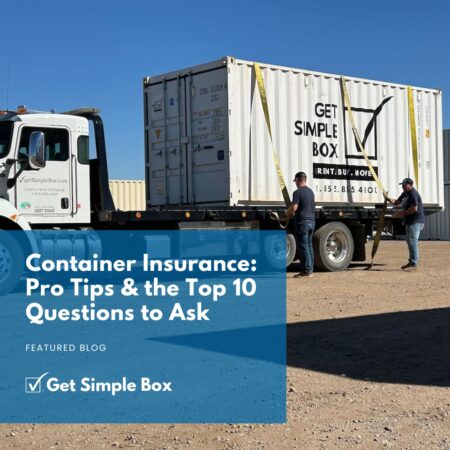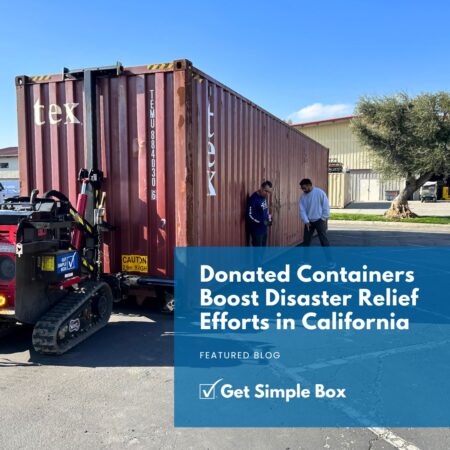Whether you’re shipping your belongings across the country or need a secure container for storage, the last thing you want is to fall victim to a scam. At Get Simple Box, we’re all about helping you make informed and safe decisions. That’s why we’ve put together this guide to help you avoid shipping container scams on marketplaces like Facebook, Craigslist, and eBay.
Red Flags to Watch Out for to Avoid Shipping Container Scams

Scammers’ tactics are to draw you in with an amazing offer – usually one too good to be true. If there is a substantial price discrepancy from the current market value, turn away. In the event that a scammer is utilizing your shipping container business to carry out these fraudulent activities, inform your clients via emails, social media, your website, and other channels.
What to Do if You Think You’ve Been Scammed
How to Avoid Scams
- Meet in Person. Whenever possible, conduct transactions face-to-face.
- Voice Calls Over Text. Move conversations to phone calls to verify the seller’s authenticity.
- Verify Information. Ensure the seller’s address and phone number match up with their story. Compare photos to known landmarks in their area.
- Request More Info. Ask for additional photos, like the back of the box or the interior, to verify the container’s condition and authenticity.
- Proof of Identity. Request a photo of their ID, credit card, or business card.
- Pay in Person. Make payments directly at the company location or to the delivery driver.

Ready to Learn More About Container Deliveries?
At Get Simple Box, we ensure on-time, hassle-free delivery, so your container arrives ready for use—letting you focus on what matters most.
Share:
Related Posts

10 Pro Tips to Declutter, Organize & Store Smarter with a Portable Storage Container for Spring Cleaning
10 Pro Tips to Declutter, Organize & Store Smarter with a Portable Storage Container for Spring Cleaning Spring is the season of new beginnings, making

The Ultimate Guide to Container Insurance: Top Q&A and Pro Tips for Secure Storage and Moving
When it comes to storing your things or moving from place to place, container insurance might not be the first thing on your mind. But

The Heart of Get Simple Box: 5 Things We Love About Our Team
At Get Simple Box, we believe that our greatest strength isn’t our containers—it’s our people. Every day, our team shows up with humility, skill, tenacity,

6 Ways Realtors Use Portable Storage Containers to Sell Homes Faster
When it comes to selling a home, presentation is everything. Successful realtors know that the more appealing a home looks, the faster it sells—and often

Donated Containers from Get Simple Box Boost Disaster Relief Efforts in Southern California
Wildfires in Southern California have caused devastating damage, displacing thousands and creating an urgent need for relief and recovery resources. Extensive Damage: Wildfires in Southern

Why 2025 Is the Year to Open a Portable Storage Franchise
Imagine owning a business that not only thrives during economic uncertainty but also allows you to balance meaningful work with time for your family and